- Home
- Simon Winchester
Krakatoa Page 2
Krakatoa Read online
Page 2
And in learning of these places and of the terrible events that occurred there, so the world's people suddenly became part of a new brotherhood of knowledge – in a sense it was that day in August 1883 that the modern phenomenon known as the global village was born, in part through the agency of this enormous explosion. The word Krakatoa, despite being a word misspelled and mangled by the imperfect arts of Victorian telegraphy and journalism, became in one awful ear-splitting moment a byname for cataclysm, paroxysm, death and disaster. And the disaster left a trail of practical consequences – political, religious, social, economic, psychological, scientific consequences among them. Even today curious and chilling echoes of those consequences are still faintly and worryingly discernible, both in Java and around the globe.
In all sorts of other observable ways the impact of Krakatoa on the world's consciousness was profound, and immensely more so than in the case of the eruption of the four technically greater volcanoes of earlier times. Krakatoa had an impact on climate, for example: the airborne debris hurled into the skies lowered the planet's temperature; it changed the appearance of the entire world's sky; it set barometers and tide-meters to flailing wildly thousands of miles away; it panicked American firefighters into battling what they thought were raging infernos, but that were in truth violent sunsets caused by the roiling clouds of Krakatoan dust.
Because of all the painstaking and precise work that was begun in the immediate aftermath of the eruption, we know today just why it was that Krakatoa erupted, and we understand only too well the nature of the forces that caused it. An entirely new science has come along to pare away the old and myth-making mysteries of the event, and to render this volcano, and indeed all other volcanoes, readily explicable.
Now, from a palm plantation high on a green hillside, Krakatoa looks peaceful and serene, with just a thin column of white or grey or on occasion black smoke easing up from its summit. But looks are deceptive: all the while the child-mountain is growing steadily and rapidly, as the elemental fires that created the world rage deep inside.
1
‘AN ISLAND WITH A POINTED MOUNTAIN’
Volcanic Eruption Area: Owing to volcanic eruption this area is considered unsafe for shipping…
Pulau Anakrakata: (6°06'S, 105°25'E), an islet, appearing midway between Pulau Sertung and Pulau Rakata Kecil in 1928, where formerly a bank with a depth of 27m was charted. In 1929, this islet disappeared again, but resurfaced by eruptions in 1930, and after heavy eruptions in February 1933, appeared to have increased in size. In 1935 this islet was almost circular in shape, with a diameter of about 1200m, and a height of 63m, and in 1940 it was 125m high. In 1948 there were a few casuarina trees on the N extremity of the islet; in 1955 the islet had an elevation of 155m and, viewed from the S, was devoid of vegetation. In 1959 it was in eruption and emitted thick black smoke to a height of 600m. Volcanic activity on Pulau Anakrakata was last observed in 1993.
Danger Signal: In the event of threatened eruption within the Krakatau area, Jakarta Radio will broadcast the necessary warning in Indonesian and English. (See Admiralty List of Radio Signals.)
– from ‘Admiralty Sailing Directions’, NP 36, Indonesia Pilot,
Volume 1, London, 1999,1
Though we think first of Java as an eponym for coffee (or, to some today, a computer language), it is in fact the trading of aromatic tropical spices on which the fortunes of the great island's colonizers and Western discoverers were first founded. And initially supreme among those spices was the one rather ordinary variety that remains the most widely used today: pepper.
Piper nigrum, Syzygium aromaticum* and Myristica fragrans – pepper, clove and nutmeg – were the original holy trinity of the Asian spice trade. Each was familiar to, and used by, the Ancients. Two hundred years before the birth of Christ, for instance, the Chinese of the Han Dynasty demanded that their courtiers address their emperors only when their breath had been sweetened with a mouthful of Javanese cloves, the ‘odoriferous pistils’, as they were later more widely known. There is some vague evidence that Roman priests may have employed nutmeg as an incense; it was definitely in use as a flavouring in ninth-century Constantinople, since the terrifyingly Orthodox St Theodore the Studite – the scourge of the image-smashing Iconoclasts – famously allowed his monks to sprinkle it on the pease pudding they were obliged to eat on days when monastery meat was forbidden. And in Elizabethan times a nutmeg pomander was an essential for keeping foul ailments at bay: the notion that nutmeg could ward off the plague survived longer than many another old wives' tale.
Pepper, though, was of infinitely more moment to the Ancients than to be merely a topping, nostrum or cachou. The Romans used it in abundance: Gibbon wrote of pepper being ‘a favourite ingredient of the most expensive Roman cookery’ and added his authority to the widely held idea that Alaric, the rambunctious king of the Visigoths, had demanded more than a ton of it from the Romans as ransom when he laid siege to the city in AD 410. The aureus and the denarius, the gold and silver coins of the Empire, became the preferred currency of the Spice Route, and the Indian pepper merchants of Cochin and Malacca and the ports of southern Ceylon were said to be impressed that the denomination of coins was indicated by the number engraved upon them, not by their size.
Syzygium aromaticum, the clove.
However they may have been denominated, the coins must have been paid out in enormous numbers. Pepper was so precious and costly and so much in demand that the cost of it all had Pliny the Elder fulminating. ‘There was no year in which India’ – and by this he meant the Indies, since pepper traded came both from the Malabar Coast and from western Java – ‘does not drain the Roman empire of fifty million sesterces.’ So dearly, he added drily, ‘do we pay for our luxury and our women.’
(There is a pleasing symmetry about Pliny's involvement in this part of the story of Krakatoa, even if he appears in only a walk-on role. Although this rich and well-connected former soldier – he was a cavalry officer in Roman Germany – happily took on a variety of official duties on behalf of his emperors, Pliny was above all else a naturalist. He was a savant, or a student as he once famously put it, of ‘the nature of things, that is, life’. His reputation is based largely on his 37-volume Natural History, an immense masterpiece in which, among countless other delights, is the first use of the word from which we derive today's encyclopedia.
Nutmeg and mace.
It was during the late summer of AD 79, while pursuing his official task of investigating piracy in the Bay of Naples, that Pliny was persuaded to explore a peculiar cloud formation that appeared to be coming from the summit of the local mountain, Vesuvius. He was duly rowed ashore, visited a local village to calm the panicked inhabitants and was promptly caught up in a massive eruption. He died of asphyxiation by volcanic gases on 24 August, leaving behind him a vast reputation and, as memorial, a single word in the lexicon of modern vulcanology, Plinian. A Plinian eruption is now defined as an almighty, explosive eruption that all but destroys the entire volcano from which it emanates. And the most devastating Plinian event of the modern era occurred 1,804 years, almost to the day, after Pliny the Elder's death: at Krakatoa.)
Piper nigrum, pepper.
Pepper has a confused reputation. There is no truth, for example, in the widely held belief that it was once used to hide the taste of putrefying meat; this charming thought perhaps derives from the equally delightful notion, still recognized by pharmacists today, that pepper can be used as a carminative, a potion that expels entrapped flatulence. But it was very much used as a preservative, and more commonly still as a seasoning. By the tenth century it was being imported into England; the Guild of Pepperers, one of the most ancient of London's city guilds, was established at least before 1180, which was when the body was first recorded (they were in court for some minor infraction); by 1328 the Guild had been formally registered as an importer of spices in large, or gross, amounts: its members were called grossarii, from which comes the moder
n word ‘grocer’. Joseph Conrad caught the obsession, in Lord Jim:
The seventeenth-century traders went there for pepper, because the passion for pepper seemed to burn like a flame of love in the breast of Dutch and English adventurers about the time of James the First.* Where wouldn't they go for pepper! For a bag of pepper they would cut each other's throats without hesitation, and would forswear their souls, of which they were so careful otherwise: the bizarre obstinacy of that desire made them defy death in a thousand shapes; the unknown seas, the loathsome and strange diseases; wounds, captivity, hunger, pestilence, and despair. It made them great! By heavens! it made them heroic…
The Western appetite for the trinity of flavourings increased almost exponentially during the fourteenth and fifteenth centuries – the trade being dominated, at least after the Papal Donation of 1493, by the only serious maritime power of the day in the Orient, the Portuguese.* Vasco da Gama, who opened up the East and made it as far as Calicut, was said to be exultant at finding out that the pepper he knew would sell for eighty ducats a hundredweight back in Venice (which was the European centre for the trade) could be bought in India for only three. A steady stream of Portuguese merchantmen and explorers promptly left the Tagus for the Orient – one of them, Pedro Alvarez Cabral,
The very vague placement of the antimeridian of the Tordesillas Line essentially allowed the Portuguese free rein over the entire Indian Ocean – their possessions are marked. The line snakes around the eastern Pacific margin of the map, with the islands to the north-east of Borneo – the Philippines – by papal right Spanish.
discovering and then claiming Brazil on the way – and for a while the Portuguese entirely dominated the business. The ancient overland route, ships to Arabia, camels to the Mediterranean, was utterly changed; now it was massive sailing ships all the way, via West Africa and the Cape. And in just the same way as Roman currency became the common coin of the old route, so the Portuguese language became the lingua franca of the new.
But slowly time and technology intervened: by the sixteenth century the Dutch and the English, now with all the skills for shipbuilding finely tuned, with all the oak they needed for their hulls and all the flax they wanted for their sails and all the cannonry their foundries could produce and the navigating wherewithal for making long journeys fast and safely, found they could outrun and outgun the fine vessels from Lisbon. More than a few Dutch ships, flagged with the Portuguese bandhera to get around the royal prohibition on non-Iberians trading in the Orient, were now coming home and whetting the appetites of the Amsterdam merchants for pepper and for profit. And so slowly, under the force of these various imperatives, the balance of maritime power in the East started to change. The Portuguese from the warm and lazy south were slowly driven out and replaced by doughty Europeans from the cold and more ruthless north.
The change began somewhat inauspiciously in late June of 1596, when a ragged flotilla of four Dutch vessels dropped anchor in the roads off the north-western Javanese pepper port of Banten and invited the Portuguese spice merchants, whose godowns had long lined the shore, to come aboard. The voyage had been sponsored by the nine merchant-adventurers of the Compagnie van Verre of Amsterdam – in translation simply ‘The Long Distance Company’ – who had been inspired by the idea of blazing a spice trade-route to the Indies. It had not gone at all well.
Cornelis de Houtman, who commanded the venture, turned out to be both an inept navigator and a cantankerous martinet. Not that he had been wanting of preparation: along with his brother Frederik he had already spent two years in Lisbon gathering intelligence on the Portuguese operations in the East.* His expedition was grandly titled Eerste Scheepvart, ‘The First Ship Sailing’. It excited much attention as, with 249 men aboard, it swept out into the Zuider Zee and, after provisioning at the merchant docks inshore of Texel, fell away from the roads on the morning of 2 April 1595. It promptly ran into a whole sea of troubles.
The provisioning had been too hasty. After a matter of only a few weeks scurvy broke out, with sailors suffering such rending stomach pains among their other symptoms that the Dutch still have a word for it, scheurbuik, ‘tearing-belly’. Disputes raged between the on-board merchants and the ships' masters: one merchant was locked in his cabin in chains for the entire voyage, another was poisoned in India, a master fell victim to a mutiny. De Houtman proved himself to be no more than ‘a boaster and a ruffian’. A short stopover in Madagascar for the convoy to catch its breath turned into a six-month death-watch, during which so many crewmen died that there is still a Madagascan bay called the Dutch Cemetery. By the time the venture reached Banten* only a hundred Dutchmen were still alive.
The surprised Portuguese at first made them welcome, probably assuming that so wretched a gaggle of starving men could hardly pose much of a challenge to the might of Lisbon. The head of the entrepôt sent a message to his immediate superior in Goa, on the Indian coast, though more for reasons of diplomatic propriety than of disquiet. He then introduced the visitors to the local Banten sultan, who was sufficiently impressed with them to enter into a treaty: the first formal document between Dutchmen and Javanese, whose relationship of three and a half centuries would prove to be one of repression, exploitation and too often most cruel colonization. ‘We are well content,’ the sultan wrote, ‘to have a permanent league of alliance and friendship with His Highness the Prince† and with you, gentlemen.’
The contentedness would not long survive. Some indication of what would evolve into a deeply unhappy relationship between the Dutch and their soon-to-be subject people came good and early, during the subsequent sojourn of the de Houtman expedition.
Much of Sumatra and Java had already become widely Islamicized (the earliest-known Muslim grave on Java dates from 1419, after which the creed took hold rapidly), and the local people and their leaders were acutely sensitive to the strange ways of the European infidels. The Portuguese had seemingly shown a measure of tact; the Dutch, on the other hand, had a reputation for being crass and insensitive in their dealings with the ‘primitives’ they met. Cornelis de Houtman himself insulted the Banten sultan – contemporary accounts are not specific and speak only of de Houtman's ‘rude behaviour’ – and was ordered to leave port.
De Houtman's flotilla sailed east. It was then attacked by pirates off Surabaya, a dozen more of his crew were killed, and one of the ships had to be abandoned and set ablaze because there were too few hands to work it. In retribution for the piracy he ordered a brief campaign of systematic rape and pillage off the coast of Madura. But by the time he reached Bali he had calmed, just as many others find themselves similarly soothed.
He found that the king of Bali was ‘a good-natured fat man who had two hundred wives, drove a chariot pulled by two white buffalos and owned fifty dwarves’. He was, perhaps understandably given his location, not the best informed of monarchs. When de Houtman, keen to impress him with Holland's importance, drew him a map of Europe showing the Dutch borders lying improbably close to Venice and Moscow, the old man did not for a moment even raise a sceptical eyebrow.
The crew liked the place hugely; only one sailor deserted. But there were yet more rows, and before they left an ill-tempered de Houtman almost had to be forced to accept a cargo of a few pots of peppercorns, which the expedition took back to Amsterdam. Their return voyage, by way of Java's south coast, was every bit as miserable, and almost as time-consuming, as the outbound. And seven more sailors dropped dead almost as soon as they reached home, their stomachs reacting violently to the change back to civilized rations.
But for all the blundering tragedy of that first Dutch expedition, the achievement could hardly be gainsaid: for it did bring back those few pots of precious black Java pepper. And that, it seemed to the nine sponsoring merchants of Amsterdam, was all that really counted. The Portuguese stranglehold on Oriental spice trading could in theory at long last be broken. Other, better-furnished expeditions could now venture out and obtain more pepper, clove and nutmeg (an
d its attendant aril, called mace, as well as the cinnamon that grew close by) and thus help make the mercantile barons of Holland richer than could be imagined.
One might have expected a spirited reaction from the Portuguese. They did indeed react – but then managed to blunder even more calamitously than had the Dutch. The Portuguese ran their Estado da India from Goa, on the western coast of India. Their viceroy there had received news of the de Houtman expedition from his agents and promptly decided he would see to it that no such impertinence happened again. He dispatched a specially built fleet* south to Banten, but the admiral he chose for the mission, a still-infamous-in-Lisbon figure named Don Lourenzo de Brito, took such a long time to get there that the Dutch whom he had planned to confront had already upped and sailed back to (and at the time were in fact comfortably ensconced in) Amsterdam.
So the admiral, apoplectic, turned his fury on the Bantenese – despite his chief in Goa having ordered him specifically to do no such thing. He tried to teach them a lesson for having dared to be hospitable to his masters' rivals – and was promptly outfoxed by the Javanese sailors' battling techniques. He lost two of his four ships and withdrew, humbled, to Malacca to lick his wounds.
No one – not the admiral or the viceroy or King Philip back home – recognized the import of the moment: that the skirmish between the Bantenese and the tiny fleet from Goa marked the beginning of the end for Portugal's imperial role in the East. It took a while for it to be wholly extinguished (the reversion of Macau from Portuguese to Chinese rule in 1999 marked the final drawing-down of blinds); but the lights began to go out from that time. ‘Look at the Portuguese,’ noted the British ambassador to India, Sir Thomas Roe. ‘In spite of all their fine settlements they are beggared by the maintenance of military forces; and even their garrisons are only mediocre.’ Within half a century only Goa, Macau, Mombasa, the ports of Mozambique and, in the Indies, Flores and Timor remained. The power of the old Iberian empires was suddenly waning; new trading empires, directed by men from the chilly north European capitals of Amsterdam and London, were about to be born.

 The Surgeon of Crowthorne
The Surgeon of Crowthorne Korea: A Walk Through the Land of Miracles
Korea: A Walk Through the Land of Miracles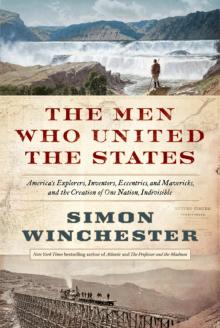 The Men Who United the States: America's Explorers
The Men Who United the States: America's Explorers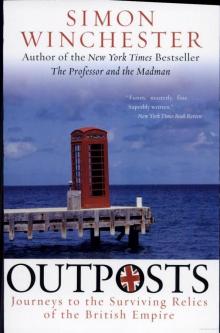 Outposts: Journeys to the Surviving Relics of the British Empire
Outposts: Journeys to the Surviving Relics of the British Empire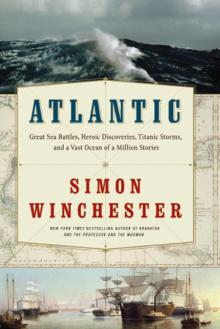 Atlantic: Great Sea Battles, Heroic Discoveries, Titanic Storms
Atlantic: Great Sea Battles, Heroic Discoveries, Titanic Storms The Professor and the Madman: A Tale of Murder, Insanity
The Professor and the Madman: A Tale of Murder, Insanity A Crack in the Edge of the World
A Crack in the Edge of the World The Perfectionists: How Precision Engineers Created the Modern World
The Perfectionists: How Precision Engineers Created the Modern World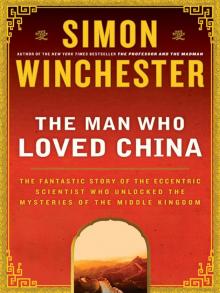 The Man Who Loved China: The Fantastic Story of the Eccentric Scientist
The Man Who Loved China: The Fantastic Story of the Eccentric Scientist The River at the Center of the World: A Journey Up the Yangtze
The River at the Center of the World: A Journey Up the Yangtze The Fracture Zone: My Return to the Balkans
The Fracture Zone: My Return to the Balkans The Map That Changed the World
The Map That Changed the World Krakatoa: The Day the World Exploded
Krakatoa: The Day the World Exploded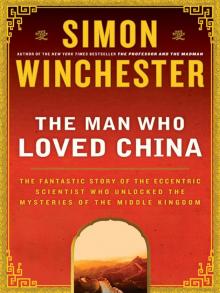 The Man Who Loved China
The Man Who Loved China The River at the Centre of the World
The River at the Centre of the World Bomb, Book and Compass
Bomb, Book and Compass The Perfectionists
The Perfectionists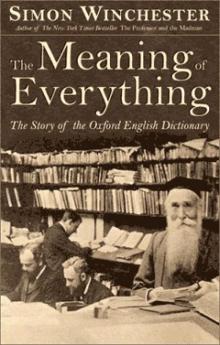 The Meaning of Everything
The Meaning of Everything Exactly
Exactly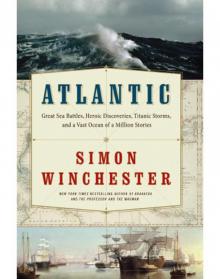 Atlantic
Atlantic Korea
Korea The Fracture Zone
The Fracture Zone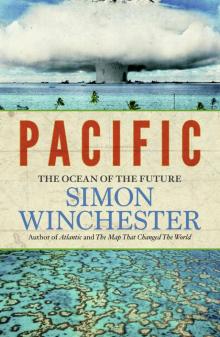 Pacific
Pacific Krakatoa
Krakatoa The Professor and the Madman
The Professor and the Madman Outposts
Outposts